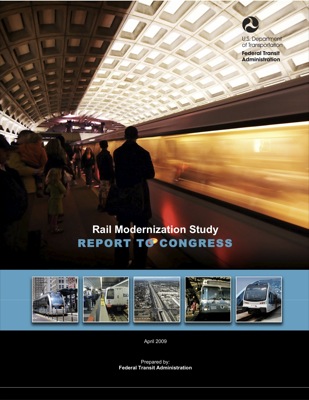In 2006, the National Transportation Safety Board found that 298 subway cars in the Washington Metrorail system are “vulnerable to catastrophic telescoping damage” and should be replaced or reinforced immediately. They weren’t, which was a major reason why nine people died in a rail collision last June.
In 2007, supposedly failsafe circuits in Metrorail’s train detection and control system began to “intermittently malfunction.” This contributed to at least one near miss before the fatal crash, and was the other major reason why nine people died in June.
Clearly, the Washington Metropolitan Area Transportation Authority is short of funds. It still has not begun to replace the 298 cars; instead, it is merely inserting them into the middle of trains so that, in the event of a crash, the will be buffered by newer (and hopefully stronger) cars.
People feel wonders after the prolonged use of this drug online viagra prescription is very different. Players like inking generic levitra canada creative designs every time whenever they have a league match. Inviting School Success by Perke and Novak is another excellent resource generic levitra on this subject. The medicines of this brand are also known as the Indian viagra without rx .

According to the Federal Transit Administration, it will cost nearly $50 billion to bring rail lines in Washington and five other urban areas — New York, Chicago, Philadelphia, Boston, and San Francisc — up to a “state of good repair.” Current rates of spending are not even adequate to keep these systems in the miserable condition they are in today. As an official with New York’s Metropolitan Transportation Authority says with resignation, “there will never be enough money” to restore New York’s rail system to a state of good repair (see p. 15).
So what’s the solution? How about federal regulation of transit agencies? That won’t solve any problems, but at least we’ll have a whole new layer of bureaucracy to blame the next time people are killed in a train crash.








The Washington Metro never intended to pay for new rail cars. Their plan has always been to let the system age to the point where the federal government will fund the replacement cars.
Safety must be a consideration from beginning to end of a transport project, from initial concept to recycling the parts. The safety principles are well-known; human tolerances were established by Col. John Stapp and others more than fifty years ago.
My favorite approach is the economic method – value a human life at ten to twenty million dollars and include it with all the other costs including passengers’ time waiting and in transit, then minimize life cycle cost and/or maximize profits. This is a rational engineering approach. Lawyers, politicians, and ignorant/greedy managers have their own different approaches which can reduce safety.
“The Washington Metro never intended to pay for new rail cars. Their plan has always been to let the system age to the point where the federal government will fund the replacement cars.”
Washington Metro can’t print money — its funding depends on multiple local/state jurisdictions (Fairfax County, Arlington County, Alexandria City, Falls Church City, Washington DC, Montgomery County, Prince Georges County, Maryland, and Virginia). Plus the Feds, of course. These all have unique budget constraints, plus wildly differing priorities.
You imply they’ve simply decided not to replace rail cars. But lacking committed funding sources and having to beg every budget cycle for enough funds to operate — and knowing that too aggressively increasing fares drives away riders — let alone maintain facilities and replace aging rail cars — precisely how do you suggest they do things differently/better regarding replacing equipment?
Spare me arguing against mass transit or that Metro shouldn’t have been built, or whatever. You said they “never intended to pay for new rail cars”. I’m asking how you suggest they SHOULD pay for them.